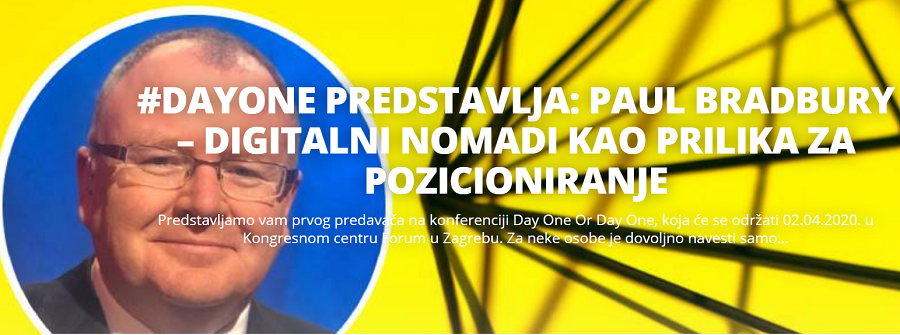Doug Lansky at 3rd EPIC Webinar - The Patient Journey & Innovation
August 19, 2020 - The 3rd EPIC webinar of the European Patient Experience and Innovation Congress features acclaimed travel guru, Doug Lansky.
The European Patient experience and Innovation Congress, in its adaptation around the world pandemic, is organizing the third EPIC Webinar, “The Patient Journey & Innovation”.
Thanks to the organizers, Bagatin Clinic with collaborative international presenter Cleveland Clinic, co-organizers Global Clinic Rating and Stackpole & Associates Inc., partner Elda Pharm, technological partner CISCO and accreditation partner Temos, we can enjoy quality webinars every month.
We often look to other industries for clues to improve our own practices.
This is why the EPIC committee invited tourism expert Doug Lansky to provide some insight into customer service and how it can positively affect the patient experience. There’s perhaps no better source than the world’s top hotels, restaurants and tours when it comes to highlighting great customer service.
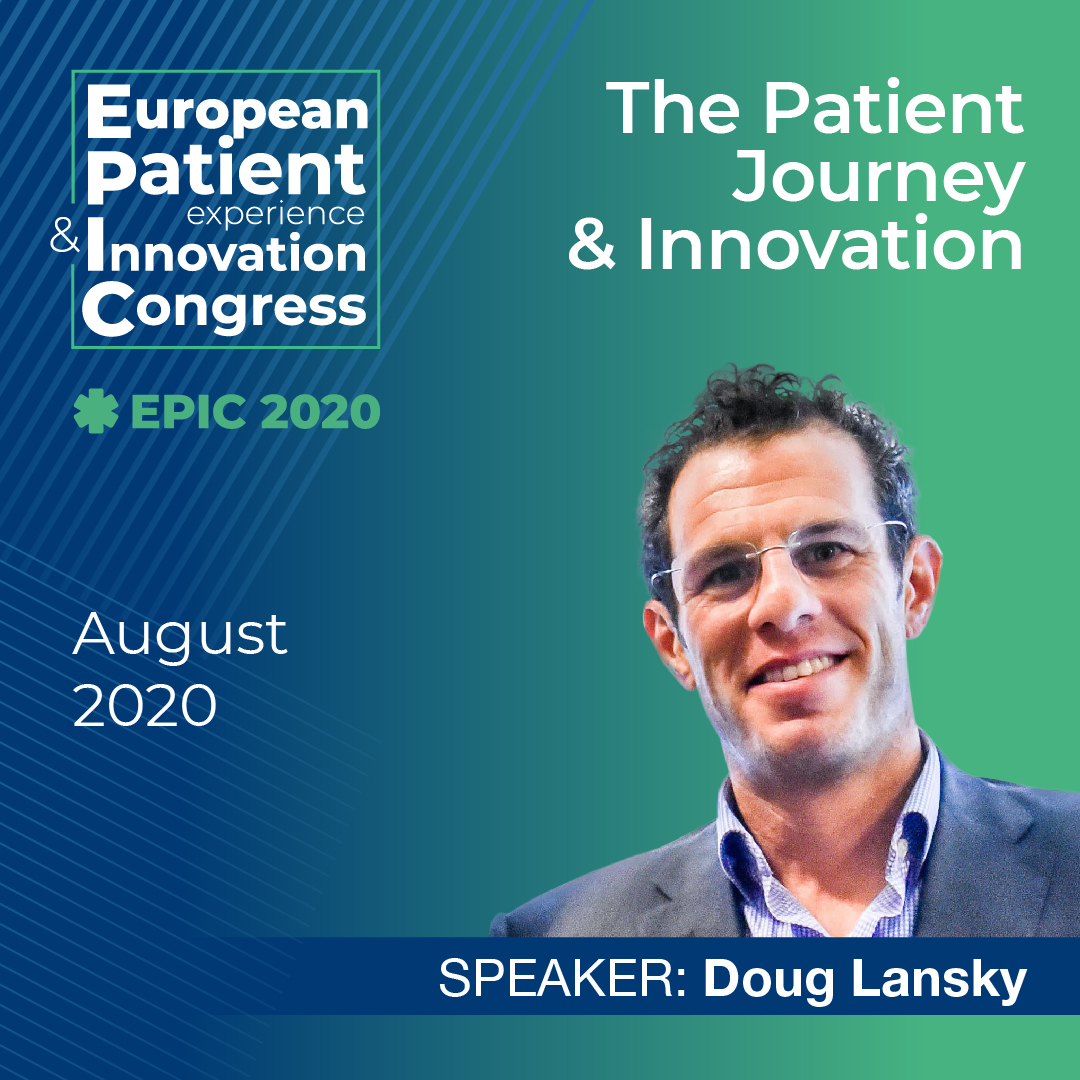
Doug will not only explain how aspects of these services can be directly adopted by the healthcare industry but that it can actually be done on a minimal budget and positively impact patients’ health by reducing stress at key points along the patient journey.
Doug Lansky is a tourism development thought leader who advises destinations and tourism companies and hotel associations around the world – from Singapore to Aruba, Google Travel to Amadeus – on strategy, management, and visitor experience. He spotted a clear customer-service connection between tourism and healthcare and has found a way to transfer best-practice examples from hospitality to hospitals.
Doug has given acclaimed lectures at nearly 100 universities, spoken to a sold-out audience at National Geographic Headquarters, for the United Nations World’s Tourism Organization, as an after-dinner speaker at corporate events and at both public and industry travel/tourism conferences, at TEDx Stockholm and set the attendance record for keynote lectures at the 2012 and 2013 ITB Berlin conferences.
The webinar will be presented by one of the members of the EPIC committee, Irving Stackpole, the President of Stackpole & Associates, Inc., a marketing, research, training, and organizational development firm.
Founded in 1991, Stackpole & Associates applies scientific marketing principles to develop practical solutions to clients’ challenges. Using the most rigorous psychological and behavioral science research, Stackpole & Associates develops methods and designs that produce unimpeachable data yielding reliable, actionable recommendations.
Stackpole & Associates works collaboratively with clients to create innovative and practical solutions to the challenges facing organizations in rapidly changing markets, including health travel.
Join us on August 27th for this new EPIC webinar and learn about the Patient Journey and Innovation.
For the latest travel info, bookmark our main travel info article, which is updated daily.
Read the Croatian Travel Update in your language - now available in 24 languages
Doug Lansky: How Coronavirus Will Force Destinations to Stop Overtourism
April 30, 2020 - How will the coronavirus affect one of the scourges of travel in the last few years - overtourism? Acclaimed tourism guru Doug Lansky on a must-watch video for Croatia's tourism chiefs.
Does anyone remember the word 'overtourism'? From memory, it entered the mainstream English language a few years ago, as a way to define the issue of too many tourists in one place at one time.
And it was only a few months ago.
And until just a few months ago, Croatia's tourism strategy seemed to be focused on numbers, numbers, numbers. Insane growth in a short time saw private accommodation beds double from 400,000 to 800,000 in just a few years, lured by great tax incentives. So good in fact, that many people took advantage of them, paid almost no tax on the earnings, and then made enough in 4-5 months so that they did not have to work for the rest of the year.
Things have changed with corona. A lot. And while the health risks and economic downtown will be extremely painful, so too does corona give us the chance to reassess our lives and our priorities.
And our tourism.
I met Doug Lansky at the Crikvenica International Heath Tourism conference in Selce last year, where I - along with everyone else in the room - was extremely impressed with his excellent keynote speech, Successful Tourism.
So impressive in fact, that Lansky was hired for two more keynote spots planned for earlier this year, EPIC 2020 in Dubrovnik and One Day or Day One #hrturizam2030 in Zagreb. Both have been postponed due to COVID-19.
He may not be travelling, but Lansky is still very active, and recently posted this outstanding overview on tourism, overtourism and the corona effect. It is a must-watch for tourism planners, and I hope our tourism chiefs find the time. For we need another strategy beyond numbers, numbers, numbers.
Destinations have been wrestling with overtourism issues for years. What's been lacking is a fundamental understanding of the forces behind it, what early-stages of overtourism look like, and the political will to take the necessary steps to solve the problem. This video explains the key underpinnings of overtourism (aka congestion/ overcrowding / unbalanced tourism) and shows how the Coronavirus [COVID-19, SARS-CoV-2] provides an opportunity for destinations to make long-overdue smart and sustainable tourism decisions. Doug Lansky is a keynote speaker and advisor in the tourism industry. Find his TEDx Talks and more info at www.douglansky.com
Among the initial comments:
Very good. I run a yacht in Montenegro and no longer go from Kotor as it's a cruise ship stop and fifty speedboats have appeared in two years to race guests up and down the bay as fast and cheaply as possible. We don't even go near the place as the normally still, beautiful water at the end of the bay looks like open sea due to the washes. We saw this happen in Dubrovnik first and so adapted our itinerary and marketing, so the proposals in this film really resonated.
For more on Croatian tourism, visit the TCN travel section.
One Day or Day One Conference: Earlybird Tickets On Sale, Space Limited
February 11, 2020 - Earlybird tickets are on sale for the One Day or Day One tourism conference in Zagreb this April. And we promise you won't want to miss out.
Tickets are now on sale for the conference of the year in the B2B tourism sector, which will be held on April 2 at the Forum Congress Center in Zagreb with the support of the Ministry of Tourism, the Croatian National Tourist Board and the Croatian Chamber of Economy, organized by the leading B2B tourism portal HrTurizam.hr.
Namely, One Day or Day One, which is held just before the start of the tourist season, will bring together everyone who means anything in the tourism sector.
"We all say that we have an incredible amount of potential wherever we turn, and that we need a change in the context of market development, in order to turn that potential into resources. But in order to turn these potentials into resources, we need to be more proactive in addressing market development and growth, there must be dialogue and common communication and consensus around common themes and challenges. The question we all have to ask ourselves is: How do we move faster and better? What can we do to make tomorrow better? Where do we see Croatian tourism in 2030?,” said the conference director and founder of the HrTurizam portal, Goran Rihelj.
HrTurizam.hr wants to be at the center of this story as a kind of mediator, a channel that connects through dialogue and communication, and provides concrete solutions. In the tourism vocabulary, it is necessary to define a complete tourism product, or to remove market barriers for the development of the entire tourism sector.
"And that's why there is a need to launch the #DayOne platform, which focuses on connecting the 'incompatible' or initiating communication. The main focus is not on problems and the past, but on constructive, open dialogue and solutions. The focus is on the positives, not the negatives. The focus is on synergy and collaboration. As I pointed out, #DayOne is not another conference but a platform. Because we can talk about the future of our tourism not only one day during the conference, but every day,” adds Rihelj.
An excellent story about cooperation with big brands and a positive example of synergy between public and private will be told by Denis Ivošević from the Tourist Board of Istria. The challenges and opportunities of cooperation between OPGs and destinations in the 1 VS 1 format will be discussed with Petra Butković from the Lika Destination Cluster.
The One Day or Day One conference should showcase all niches and all development opportunities in Croatia. Thus, Berislav Sokač from Run Croatia will bring an interesting vision of Croatia as a racing destination.
We continuously talk about continental tourism and emphasize the importance of developing the continent that has the greatest opportunities for year-round tourism. The best campaign of the East was the great HeadOnEast campaign as part of Croatian Tourism Days in Slavonia. Ivana Juric from the Osijek-Baranja Tourist Board will also be at the conference.
How tourism is developed in Austria, which is one of the best examples of year-round continental tourism, will be told by Michael Fend, LAG manager at Steirischen Vulkanlandes.
Paul Bradbury, owner of Total Croatia News, One Day or Day One conference partner, and an ambassador of Croatian tourism, is someone who sees the whole story from the outside as a foreigner with a Croatian passport. His lecture, “5 tourism gifts that Croatia is ignoring, and how to fix them,” will certainly arouse great interest.
Branding in Croatia is a unique story that is talked about often, and the importance of branding does not need to be over-emphasized, because it is imperative today. The conference will also be thoughtfully themed with branding, a complex process in which we cannot go wrong. Bozo Skoko will discuss this topic at the conference, too.
The private sector in tourism has a lot to say. What are the challenges and biggest problems, what they expect from the public sector, and what solutions they propose will be shared in a large panel where there will be representatives of hoteliers, travel agencies, family accommodation, and caterers.
Tourism Minister Gari Cappelli, who has supported the conference and expects a lot from it, will present a tourism development plan and a vision of where we see each other in 2030. The fact that the Minister of Tourism and his associates will accompany the entire conference already gives hope for the detection of genuine problems and the concept of concrete solutions. The same panel should also feature the Croatian National Tourist Board, which should be represented by Director Kristjan Stanicic. This panel will give clear guidance to the private sector, where Croatia is going, and where Croatia wants to be. The moderator of this panel is acclaimed communications expert Kresimir Macan.
How private and public sector dialogue and cooperation can look will be revealed by the example of Ognjen Bagatin and Bagatin Clinic’s health tourism development.
One of the current leading tourism experts, Doug Lansky, will speak for the first time in Croatia about positive global examples of how tourism destinations are positioned, developed and grown. Doug's lectures have always attracted a large number of listeners and attention, especially from the tourist public and the profession, and he has a large base of followers in Croatia as well.
It is crucial to emphasize that after the conference, meetings with the private sector in each area follow, in order to gather all concrete solutions into one strategic document, with a clear argument of the whole issue, and most importantly, with concrete solutions offered to accelerate market change. A document that will integrate the views of the private as well as the public sector, with the aim of consensus on the main challenges with a specific time interval on how to overcome them.
There will also be an after party in a location yet to be announced, with discounted drinks and a chance for attendees to network with like-minded progressive tourism professionals, as well as meet some of the conference speakers.
Tickets can be purchased directly from HRTurizam.
For Earlybird entries, which run through March 20, tickets are 750 kuna, or 40% of the total ticket price. After March 20, the ticket price will be 1250 kuna. Seats are limited.
Don't miss out on the first-ever One Day or Day One tourism conference in Zagreb!
To read more about travel in Croatia, follow TCN’s dedicated page.
Doug Lansky, Tourism Minister Cappelli Among Key Speakers at '1 Day or Day 1' Conference
February 6, 2020 - New tourism conference 1 Day of Day 1 #hrturizam2030 announces leading global tourism thinker Doug Lansky as its keynote speaker, with Tourism Minister Gari Cappelli also confirmed in an impressive and high-profile programme of speakers.
For a man who has never organised a conference before, Goran Rihelj from HRTurizam is putting on quite a show.
As previously reported on TCN, a new tourism conference, aimed at positivity and achievability, bringing the key stakeholders in the public and private sector in Croatian tourism, will take place at Forum Congress Centre in Zagreb on April 2.
The final list of speakers is almost confirmed, the schedule is by far the most engaging and thought-provoking I have seen at any tourism conference in Croatia, and I encourage anyone with an interest in a better future for Croatian tourism to attend. The schedule will be published in the next few days, and tickets will be available online next week, with a special early bird price.
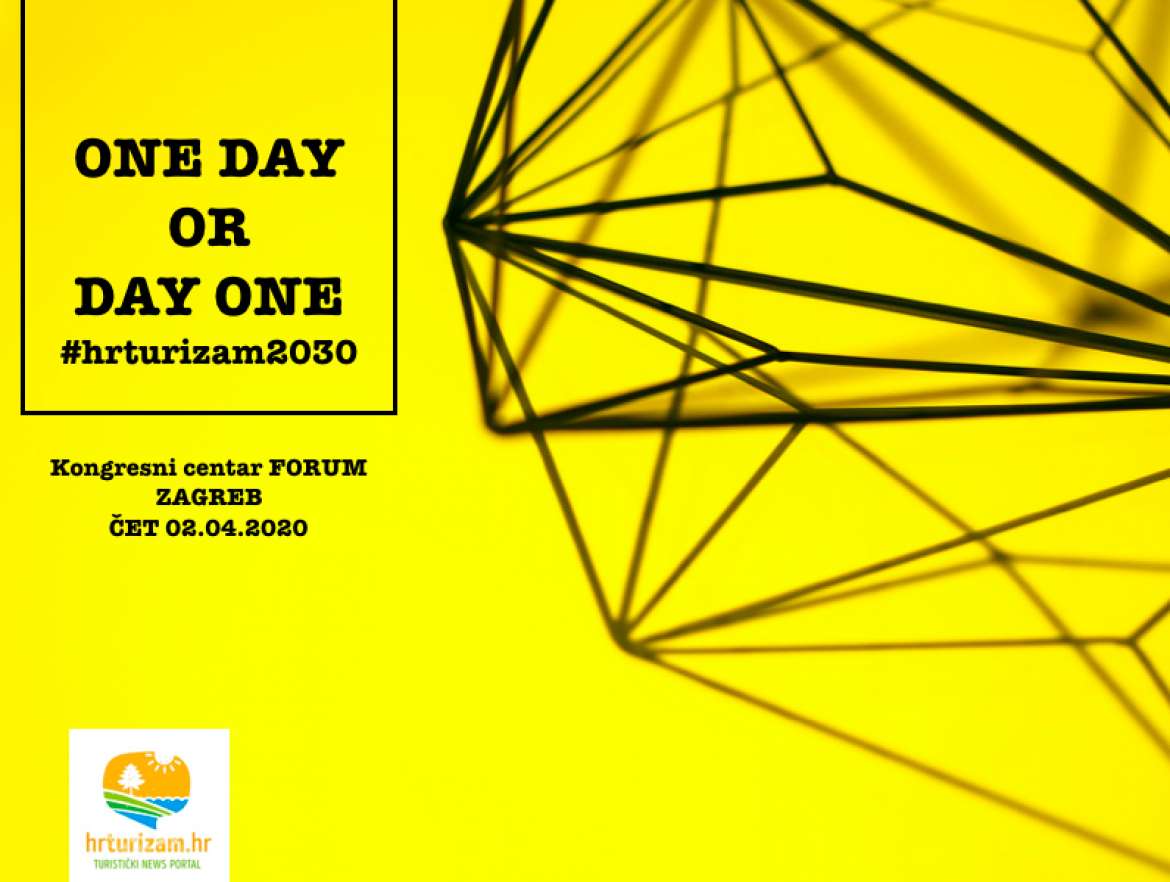
I am particularly excited - but for very different reasons - at the attendance of two speakers in particular - tourism guru Doug Lansky, and Minister of Tourism Gari Cappelli.
I certainly don't agree with everything the minister says and does, as followers of TCN may have noticed, but I think it is fantastic that he has decided not only to support Goran's excellent initiative but also to speak. The minister will be participating, along with senior representation from the Croatian National Tourist Board, on a panel discussing where Croatian tourism will be in 2030. The panel will be moderated by PR expert Kresimir Macan, former Communications Director for current Prime Minister Andrej Plenkovic.
Cappelli's willingness to engage is commendable, one of several senior officials to support Goran's conference, and I really believe that this could be the starting point for a new era of cooperation and understanding between public and private sector in this most important sector of the Croatian economy.
I am delighted to support Goran as well, and I will be speaking in the morning on 5 Tourism Gifts Croatia is Ignoring, and How to Fix This. Croatian speakers can read more about this on Goran's site.
And I won't mention the beach or the Adriatic Sea once, I promise.
But I am really excited by the announcement of the keynote speaker, Doug Lansky. Excited not only because he is an outstanding addition to the conference, but also because his messages are exactly the ones Croatia's tourism chiefs need to hear. And this time they will, for they will taking part in the conference.
I first met Doug Lansky at the Crikvenica International Health Tourism conference a few months ago, where he not only gave an outstanding keynote speech on successful tourism, but also two thought-provoking workshops. I wrote about my impressions of Doug's message at CIHT here.
For those who want to catch Doug Lansky down in Dubrovnik, he will also be speaking at EPIC 2020, the first European Patient Experience and Innovation Congress on March 19 - 21, another outstanding addition to the Croatian conference season.
More details of One Day or Day One #hrturizam when we get them. See you there.
Lessons for Croatia: Successful Tourism by Doug Lansky at CIHT 2019
Successful tourism in an age of overtourism. Leading travel guru Doug Lansky put on a very thought-provoking show at the recent Crikvenica International Health Tourism (CIHT 2019) conference in Selce last week. With plenty of lessons for Croatia (and others) to learn.
From the very first minute after taking the stage of CIHT 2019, Doug Lansky had me hooked. One of the leading (and most engaging) speakers on the global circuit (you can check out one of his TED talks below), author of books for both Lonely Planet and Rough Guides, along with a host of other stellar tourism credentials, it became clear early on from his pouring cold water on Kvarner Regions's inclusion in Lonely Planet's top 10 regions to visit in 2020, that this was going to be quite an education.
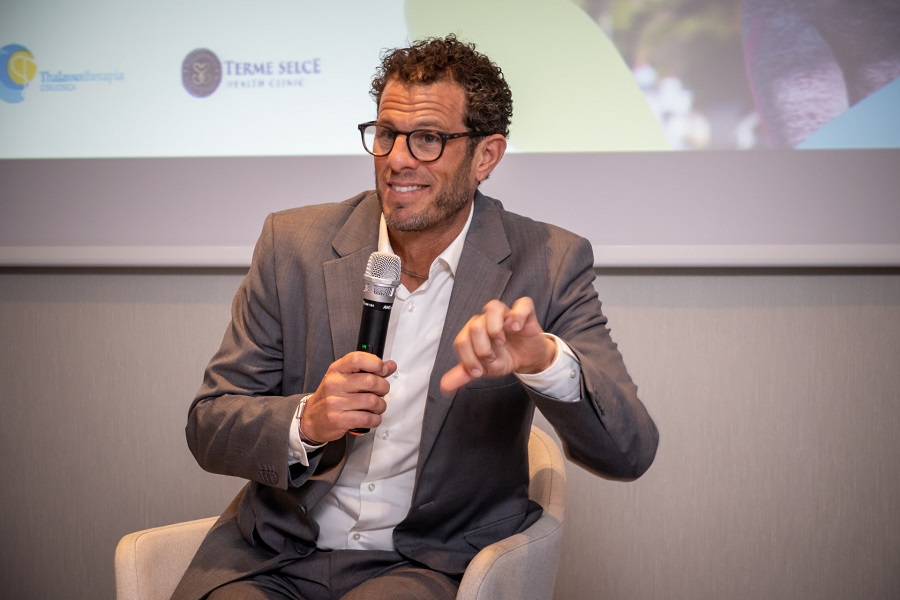
"Yes, it is nice to have, but people don't visit destinations because of lists. I know how those lists are compiled. I used to compile them back in the office for various publications. What makes people get on a plane is something altogether different."
Before we got to what made people travel, we were treated to a very detailed and entertaining explanation of what did not make people travel. Logos, slogans, websites, sponsored social media posting, lists. And food.
Yes, food.
Lansky showed us the results of a social media which was conducted to find out if there were differences between what people clicked on when they saw a sponsored post and then - via a tracking cookie installed - what they actually spent the money on when they reached the destination. The findings were amazing. Of the four tourism activities chosen for the experiment - restaurants, supper clubs, natural attractions, and tours - restaurants had the highest click-through rate (CTR) on the ad (2.9%) and the lowest actual visit (2.7%), while natural attractions had by far the lowest CTR (1.9%) but by far the most engaged results in terms of users and dollars spent (4.8%). Take-home lesson - what grabs someone's attention while browsing on the sofa is not necessarily what will be the beneficiary of an open wallet on arrival.
So if these are not the reasons people travel, what is getting them on a plane? The answer is something obvious in an increasingly globalised world.
Something different, something unique.
Lansky took us through several examples of how abroad is looking even more like home than home is these days. Just 2 Pizza Huts in New York City, but 72 in Beijing. Just 7 KFCs in The Big Apple, but 134 in the Chinese capital. No New York Wallmarts, but three in Beijing - we have even mastered how to sell the Chinese their stuff back to them, he joked.
All this got me thinking. Croatia has never been big on international franchises but how did it compare with the rest of the EU? The results were rather interesting and offered a wonderful branding opportunity of the major EU tourism destination offering something completely different.
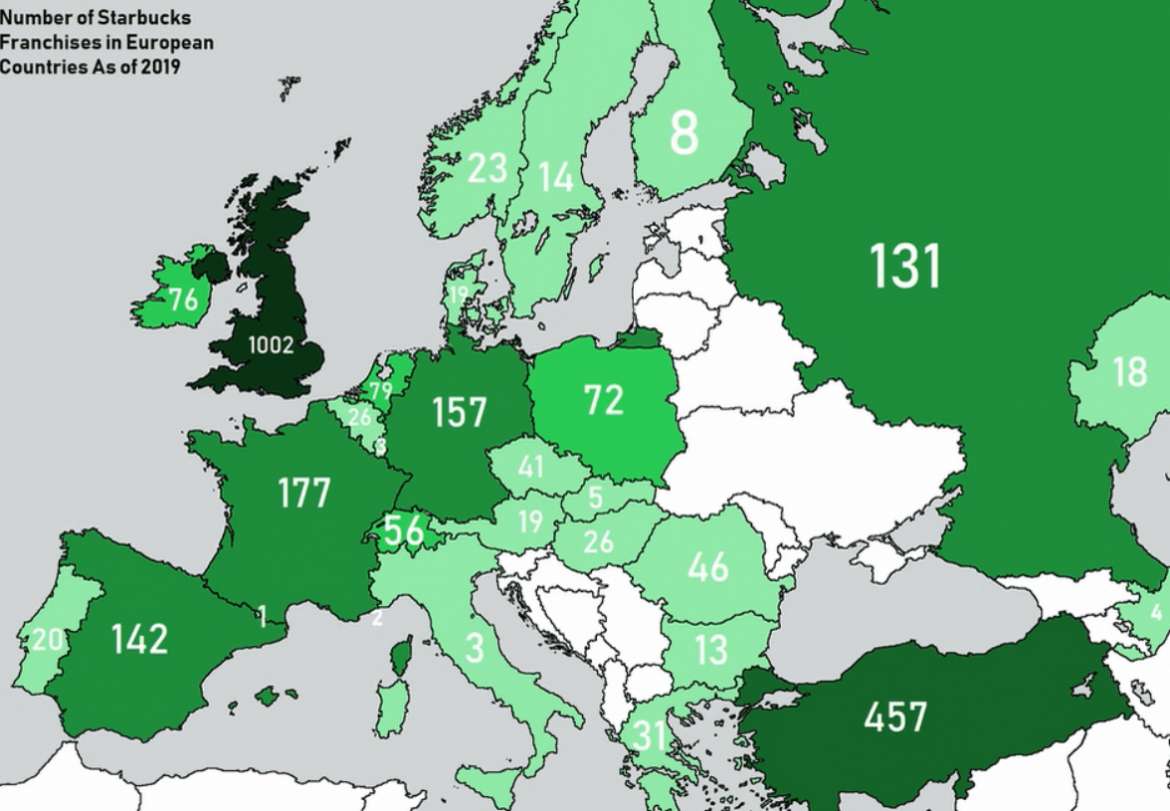
A country which can call itself the Non-Starbucks capital of the EU, the largest country in the EU (and let's not forget those 20 million tourists looking for a fix) with no Starbucks at all. One of the main reasons for that is the coffee - and coffee culture - is so strong.
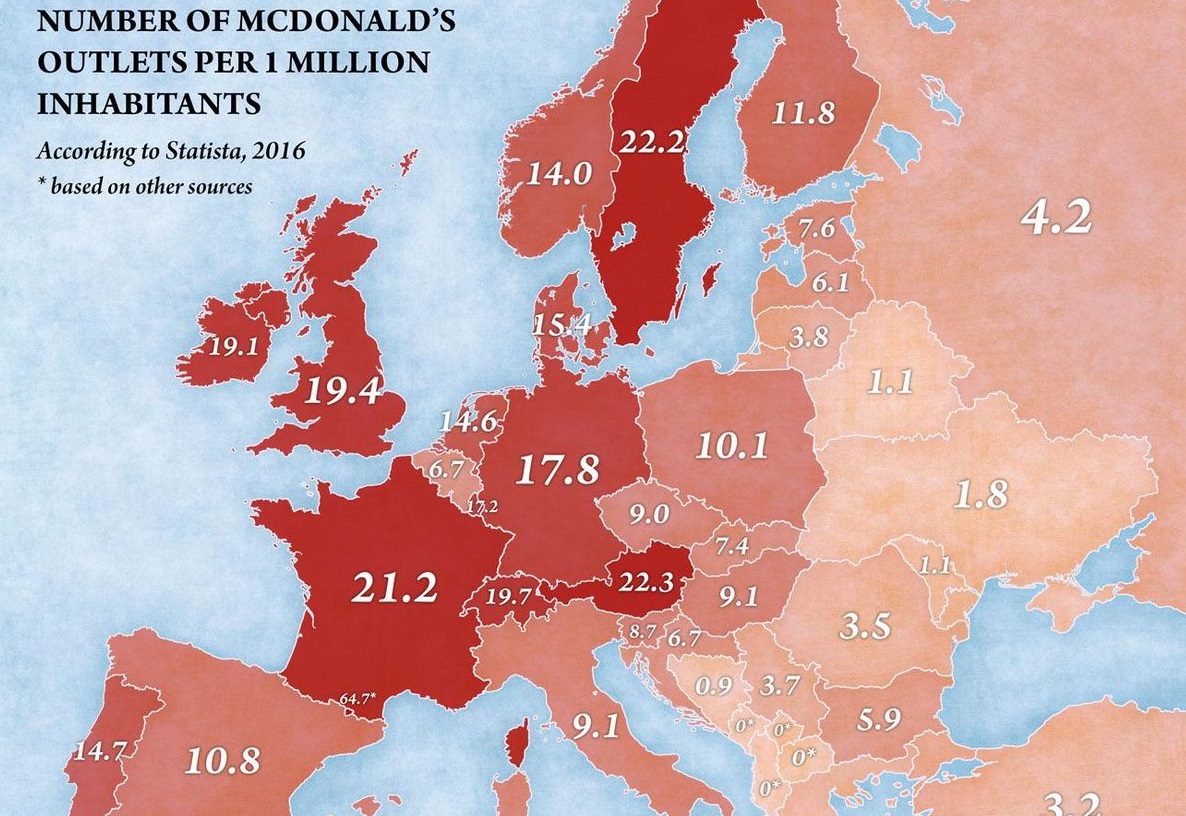
The lowest per capita density of McDonalds in the EU outside the Baltic States. The KFC situation looked encouraging - just 7 outlets compared to 224 in Poland for example.
A great niche for Croatia to develop, perhaps?
Tourists want something unique, something different
Something different like the London Eye, for example, which was a real hit and attraction when it opened. Something truly unique. And then not so unique, as Eyes started to appear in cities as far away as Shanghai, Melbourne and Singapore.
But it is the truly unique attractions which make us travel. And the very ironic thing is that those very unique things are VERY affordable and cost almost nothing. Imagine going to Paris without visiting two of its stars, the Eiffel Tower and the Louvre - combined entrance price just 20 euro. The Taj Mahal (1 euro), the Pyramids (6 euro) the Great Wall of China (7 euro), the Hermitage in St Petersburg (8 euro), the Statue of Liberty (17 euro), Edinburgh Castle (20 euro), Macchu Picchu (39 euro). Lanksy took us through 15 world-class and very unique attractions, of which Petra in Jordan was the most expensive at 60 euro - total entrance price just 290 euro all in. In his example, a tourist coming from Vancouver to Paris to see the Louvre was spending just 0.3% of the holiday budget on the thing he came to see.
All the money is made elsewhere.
Protect and develop the unique and fabulous attractions, and they will come. And word of mouth will spread about a destination with something different and well-managed, and non-sponsored social media will market that message even louder.
Unique attractions do not need to be old monuments or places of natural beauty. He cited the food court in Brooklyn, where members had to adhere to one important rule - they could not have a similar restaurant anywhere else. If they did, they were out. And so every single restaurant is a unique gourmet experience. Plane tickets for foodies.
From the ice hotel in Sweden to the competition in Scandinavia and Finland for the best offering to enjoy the Northern Lights, to random unique hits such as a restaurant with goats on the roof, it is the unique experience which is what people are searching for.
The key of course is how to manage it well.
But we are many, and will be more. Time to put a cap on CAPitalism?
But there are more and more tourists, how to stop them coming en masse? One of the things I loved about Lansky's presentation was that he presented it in such a way as you felt that everything was so obvious and that you almost came up with the idea yourself. Simple steps, sensible suggestions, eloquently delivered. Many eyes opened.
The best example of tourism development is a theme park. If the management decides to add another ride, they also add supporting facilities - another restaurant, a ticket booth, extra toilets. The theme park growth is coordinated and takes in all considerations, and so bottlenecks are avoided. Not so with tourism.
Everyone wants to squeeze into the old town of Dubrovnik, for example, but are there enough parking spaces? Toilets? And this is before we think about the cruise ships...
There are natural caps in many, many tourism-related sectors, where only a finite number of people can come. Simple examples include airplanes and hotels. But it is rare to find destinations that put a cap on tourist numbers, as that would be anti-capitalist, right? Missing out on the chance to make more money. That money-grabbing approach highlights one of the stress lines of tourism today - the alienation of the local community. Yes, we want more tourism, said Lansky, but how many in the room wanted ten buses a day parked on the street with engines running to keep the aircon going, while tourists took over the streets, cafes and peed in the bushes. Day after day after day?
But with so many people coming, how do you reduce the numbers and reduce those queues. Can you actually put a cap on tourism numbers? Some destinations are. One Italian coastal destination Lansky mentioned was overrun by tourism and the 2.5 million visitors. They shifted to a ticketing entrance system with a maximum of 1.5 million tourists. A million less tourists, a much better destination and happier locals.
I wrote something similar a few months ago about how to deal with overtourism in Dubrovnik. With so many tour buses clogging up the roads, their guests spending little to nothing on arrival, and with the wonders of modern technology, I suggested an application which controlled access to the prime attraction, the old town. If you are spending a night in Dubrovnik, you get the download code. If you, the download costs you 100 euro, which you can spend anywhere in the old town (restaurants, entrance to the walls etc). It might not be popular for those looking for a cheap walk around, but Dubrovnik has to put a cap on things somehow, as it is really not a nice experience visiting in the summer these days. You can read more of the concept here.
Looking for a tourist attraction which manages demand very well? The Harry Potter Experience in London. Massively in demand, but only available when your selected visiting time comes around. Simple. Not only no queues, but a chance for advance spending when you book other services online.
How to make guests spend more?
I really enjoyed this section, as Lansky came out with a trove of data and ideas. And most of the conclusions were simple enough that I could make them.
People like to shop, especially if you can divorce the cash from the experience. Put it on the room bill, advance shopping, casino chips, that kind of thing. More than 30% of shopping is done after 6pm apparently, so stay open!
Toilets! Lack of good toilets often sends tourists back to the hotel to use the facilities in the hotel room. And then one of the kids lies on the bed, Dad checks his email, and before you know it, destination spending opportunities are lost.
One company which understands this is 2theloo, a high-street retail services company which keeps those spenders out in town. Check out the video above - genius.
Innovative tourism to create something from nothing
Customer service is everything. Do it well and that will often be the highlight of the holiday. Do it exceptionally and innovatively, and you can transform your business. Lansky gave a great example of a hotel which was number 62 in the destination's TripAdvisor ranking. They decided to convert 4 ground-floor rooms to be pet-friendly. In order to add a little friendliness, they had a gimmick of email the pet to say that its bowl and cushions were ready, ending with a greeting like Wuff, Wuff. To the hotel's astonishment, the arriving canine guests emailed their own wuffing messages back. To such an extent that all were great friends by the time of arrival. The hotel is now completely pet-friendly in all rooms. And number one on TripAdvisor.
Another brilliant idea which cost nothing was the Overstay Hotel. Guests can stay as look as the room is not booked, so if you come for a night and there is no booking for the rest of the week, you get a free stay. While this does not actually cost the hotel very much, in addition to the marketing benefit, guests are likely to spend on ancillary services such as bar and restaurant, much more than an empty room could.
Not all the money stays in the destination
An obvious point, perhaps, but one which is often overlooked. 15% to Booking.com, 10% franchise fee to corporate head office, 4% for credit cards etc - and so much more, but Lansky also gave a great example of how tourism money seemingly comes into a community, when it actually doesn't. And he gave a great example, again.
A guy comes to a hotel and pays for the room in cash. 100 euro. The owner is grateful as he is broke and immediately gives the 100 euro to the laundry guy who has been doing the service on credit. The credit guy goes to pay his vetinary bill, and the vet then settles his outstanding bar bill. The barman pays the debt to the accountant, who immediately runs to the hotel to settle last night's hotel bill when his parents came to stay. Just as he does so, the original guests comes down and says he has changed his mind and so takes his money back and leaves.
The other money aspect which is rarely mentioned (and I have NEVER heard it mentioned in Croatia) is the cost of tourism. 20 million tourists generate 12 billion dollars or whatever the number will be this year, but has anyone ever heard a number on the utility or cleanup costs on the explosion of mass tourism. Or the environmental coast of the gradual erosion of the idyll that was the Adriatic coast 50 years ago?
So what are Croatia's top 10 unique things to see that might get people on that plane?
To conclude - as I have gone on longer than I intended - close your eyes, strip away the tourists and the mass tourists. What are the top 10 things in Croatia with that unique WOW factor or the potential WOW factor? Something that you can not or can hardly find anywhere else?
My list I am sure will be different to yours, so post yours in the comments - it could be a fun discussion. But one thing that immediately strikes me about my list is that almost all - if not all - of the 10 are either threatened by overtourism, or are hardly touched by tourism at all. The lesson being, if young Lansky is right, that Croatia and his Starbucks-free brand might be better served to have a complete rethink of how to make those unique attractions which cost almost nothing to see so amazing that all the money is spent around them.
And to consider, perhaps, that 1000 tourists a day spending 1000 euro a day is a lot better than 100,000 spending 10 euro a day...
My top 10, in no particular order
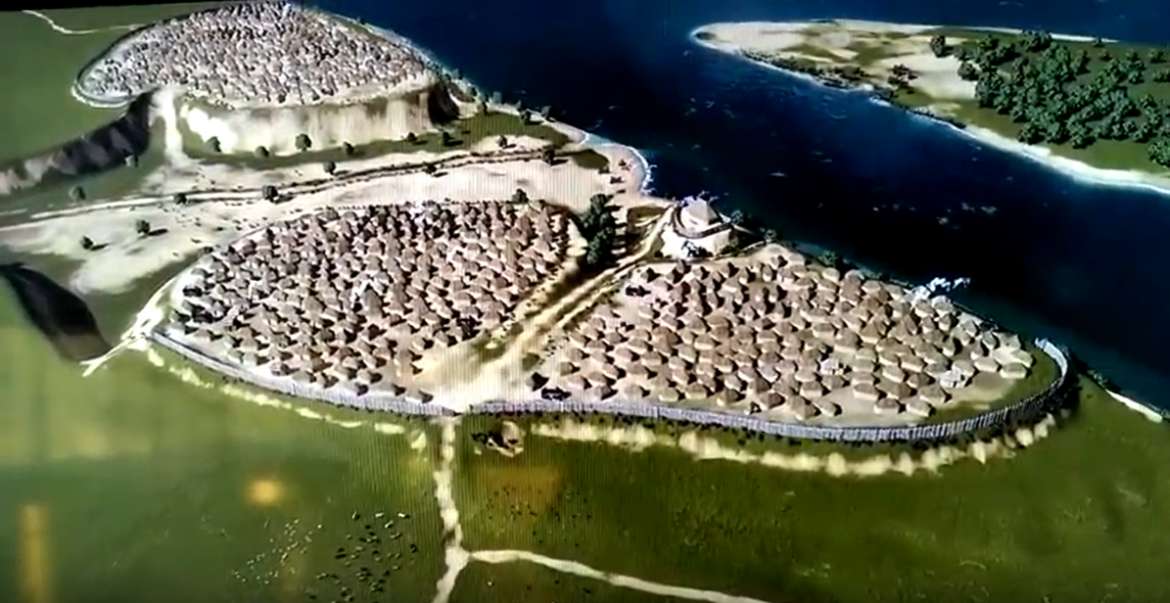
1. Dubrovnik Walls
2. Diocletian's Palace
3. Plitvice Lakes
4. Vucedol (in photo above - and an intro for those who have never heard of it)
5. Blaca and Dragon's Cave
6. Blue Cave
7. Smiljan, birthplace of Nikola Tesla (but needs to be developed - but what an opportunity with 21 million electric cars on Europe's roads by 2030)
8. Pula Arena
9. Sibenik stone fortresses and cathedral
10. Hvar Town and the Pakleni Islands
Imagine if all those where developed with the idea of preserving and keeping special the unique attractions, and then generating the cash all around.
To learn more about Doug Lansky and successful tourism, visit his official website.
For more on tourism in Croatia, follow the dedicated TCN travel section.


